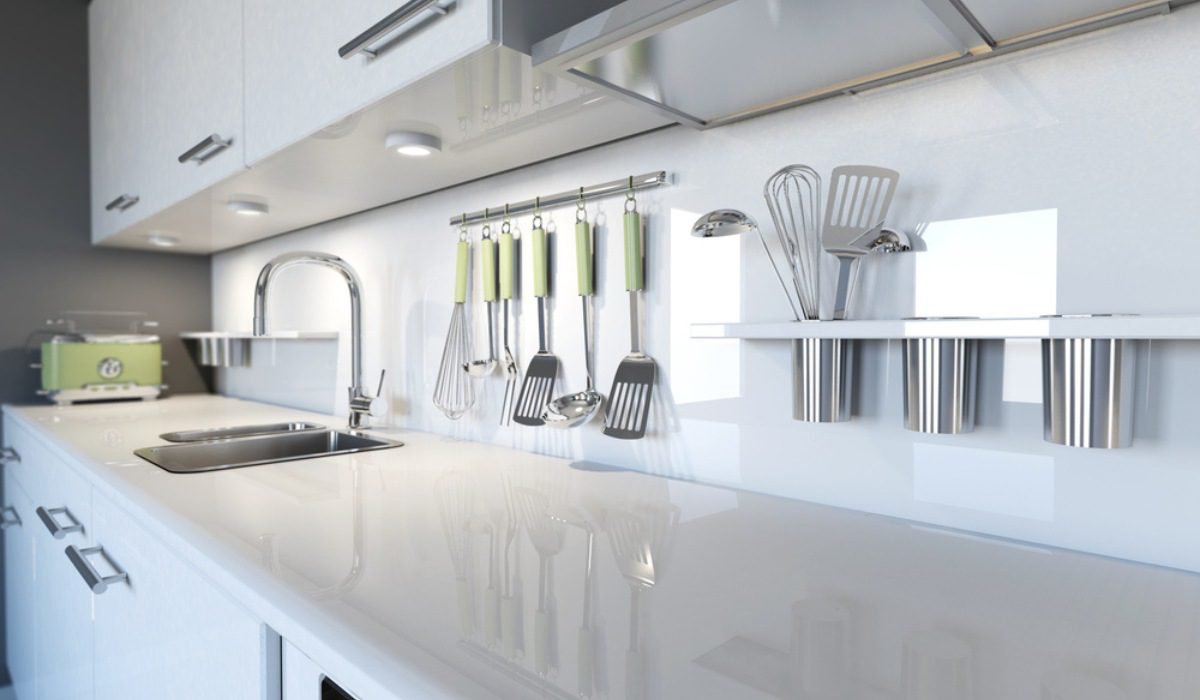The kitchen serves as the heart of the home. It’s where families and friends come to cook and eat together. Each kitchen is unique because it reflects the style and preferences of the individuals who use it. A kitchen’s layout, materials used for countertops and cabinets, colours, and overall appearance all contribute to its success. Some kitchens have a plethora of fancy cooking tools, while others keep things simple. But what truly distinguishes a kitchen is the personal touch of those who use it. In this article, we’ll look at 7 kitchen designs that may not be the best fit for your home, allowing you to make informed choices about creating a space that meets your needs and preferences.
See also: Classy kitchen designs ideas for your home
Not having enough ventilation
Avoid
- Underestimating the significance of a good ventilation system in your kitchen.
- Neglecting to invest in a suitable hood for proper ventilation.
- Allowing your kitchen to feel stuffy and greasy due to inadequate ventilation.
- Overlooking the importance of indoor air quality in the kitchen.
- Ignoring the need for proper ventilation, which can lead to an unpleasant cooking environment.
Do
- Understand the importance of having a good ventilation system in your kitchen.
- Recognise that a ventilation system helps to get rid of smoke, grease, and odours while cooking.
- Invest in a suitable hood to ensure proper ventilation in your kitchen.
- Ensure that your hood effectively removes air to prevent your kitchen from feeling stuffy and greasy.
- Improve indoor air quality by investing in a hood that properly vents the air.
- Enjoy a fresh and clean kitchen environment by investing in proper ventilation.
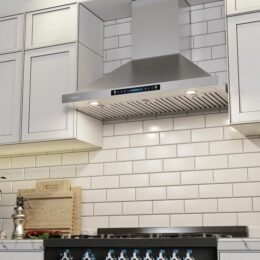
Source: Pinterest
Not thinking about lighting
Avoid
- Depending solely on one large light in the centre of the kitchen.
- Neglecting to include different types of lighting, such as ambient, task, and accent lighting.
- Overlooking the importance of lighting for both functionality and aesthetics in the kitchen.
Do
- Remember that good lighting is crucial in the kitchen for safety and visibility.
- Incorporate a variety of lighting types, including ambient, task, and accent lighting.
- Use ambient lighting to brighten the entire kitchen area evenly.
- Install task lighting to illuminate specific areas like the sink and stove where you need to see clearly.
- Consider accent lighting to highlight decorative features or focal points in the kitchen.
- Aim for a mix of these lighting types to ensure your kitchen is both functional and visually appealing.
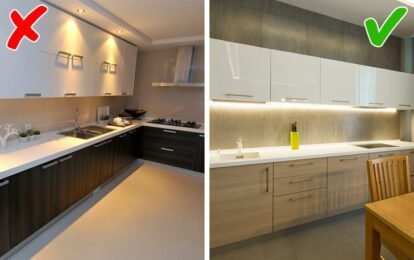
Source: Pinterest
Importance of kitchen triangle
Avoid
- Neglecting the importance of the kitchen triangle concept in kitchen design.
- Placing the sink, stove, and refrigerator too far apart, which can disrupt workflow and waste energy.
- Overlooking the benefits of arranging these key appliances in a triangular layout for efficient cooking.
- Ignoring the impact of appliance placement on the overall functionality of your kitchen.
- Failing to consider the kitchen triangle when planning or updating your kitchen layout.
Do
- Remember the concept of the kitchen triangle, which involves the sink, stove, and refrigerator.
- Understand that these three areas are the most frequently used in the kitchen.
- Aim for an efficient workflow by arranging these appliances in a triangular layout.
- Keep the sink, stove, and refrigerator close together to minimise unnecessary steps and save energy.
- Consider the placement of these appliances when designing or renovating your kitchen to ensure a smooth cooking experience.
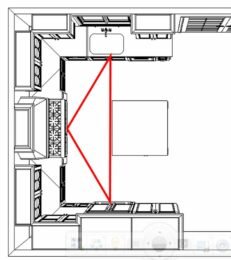
Source: Pinterest
Placement of appliances
Avoid
- In kitchen design, traffic flow is often overlooked.
- Creating a cramped layout that restricts movement and causes discomfort.
- Failure to provide adequate space for opening cabinets, drawers, and moving between work areas.
- Underestimating the effect of poor accessibility on kitchen functionality.
- Failing to consider the needs of multiple users and how they will use the kitchen space.
Do
- Keep in mind the flow of traffic when designing your kitchen layout.
- Recognise that kitchens are often busy spaces and need to accommodate movement smoothly.
- Ensure there’s enough space for people to move around comfortably without bumping into each other.
- Plan for ample room for opening cabinets, pulling out drawers, and navigating between different work areas.
- Consider the placement of appliances and fixtures to minimise congestion and maximise usability in your kitchen.
Caution with electricity
Avoid
- Neglecting to consider the importance of electrical outlet placement in kitchen functionality.
- Overlooking the need to strategically position outlets during the design process.
- Underestimating the inconvenience that poorly placed outlets can cause in the kitchen.
- Failing to seek professional advice when planning outlet placement.
- Overlooking innovative solutions like hidden or pop-up outlets to maintain a neat kitchen appearance while still providing access to power sources.
Do
- Recognise the significance of carefully planning the placement of electrical outlets in your kitchen.
- Understand that outlets are crucial for powering kitchen appliances, gadgets, and devices.
- Consider consulting with a professional designer or electrician to strategically position outlets for convenience and efficiency.
- Explore options such as hidden or pop-up outlets to maintain a clean and uncluttered kitchen aesthetic.
- Ensure that outlets are easily accessible and located in convenient spots throughout the kitchen for maximum usability.
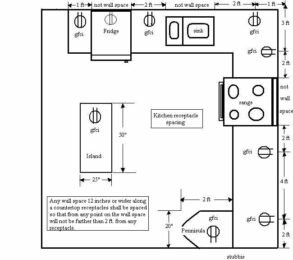
Source: Pinterest
FAQs
Galley layouts are ideal for maximising space in narrow kitchens. L-shaped layouts work well in open floor plans and offer good traffic flow.
There is no fixed answer. Plan for cabinets, drawers, and potentially a pantry to avoid countertop clutter. Consider pull-out drawers and organisers for better accessibility.
Quartz, granite, butcher block, and laminate are all popular choices, each with its pros and cons in terms of durability, aesthetics, and cost.
Consider your cooking habits and needs. Do you need a gas or electric stove? How big of a refrigerator do you need? Look for features that enhance your workflow.
Kitchen renovations can vary greatly in cost depending on factors like size, materials, and appliances. Set a realistic budget and discuss it with your contractor.
Consider refacing existing cabinets instead of replacing them entirely. Opt for mid-range materials and appliances. Be open to exploring creative solutions with your designer.
Start with looking at designs you want or consult with a professional kitchen designer. They can help you create a functional and stylish space that meets your needs and budget. What layout to choose for a small kitchen?
How much storage is needed for the perfect kitchen?
What are some popular countertop materials?
How to choose the right appliances?
How much does a kitchen renovation typically cost?
What are some ways to save money on a kitchen renovation?
What if I'm not sure where to start?
| Got any questions or point of view on our article? We would love to hear from you. Write to our Editor-in-Chief Jhumur Ghosh at [email protected] |

Sanskrati Gupta is an economics major currently pursuing her studies at Delhi University. She likes to explore world topics and share her thoughts and analysis through her writing.
